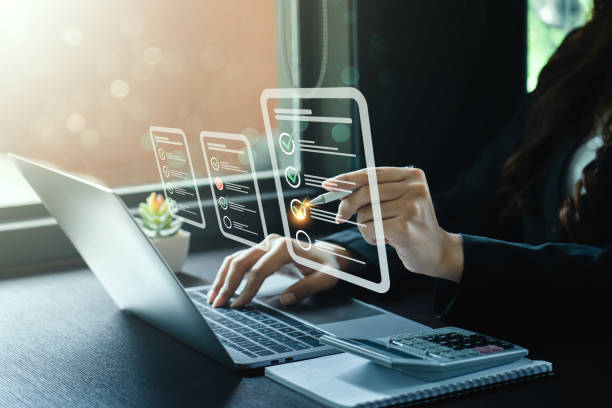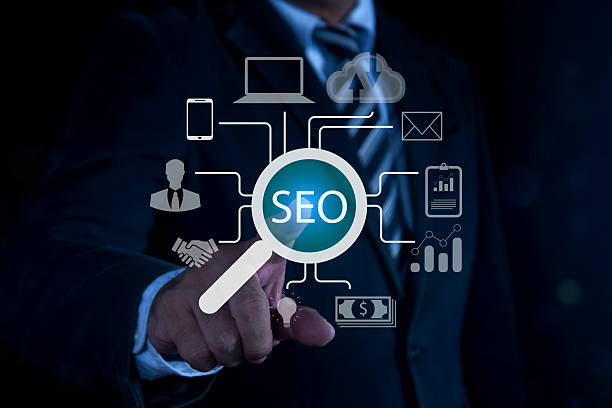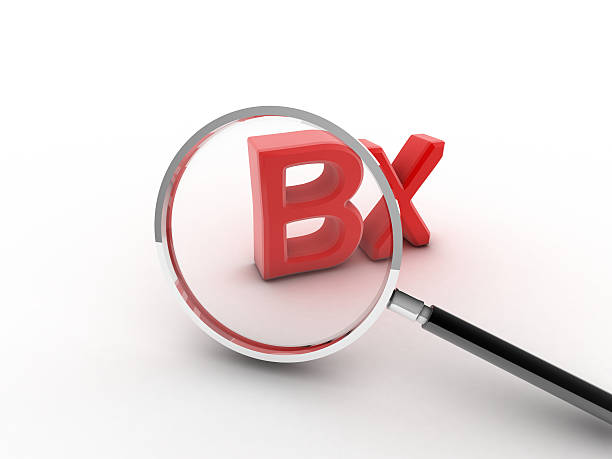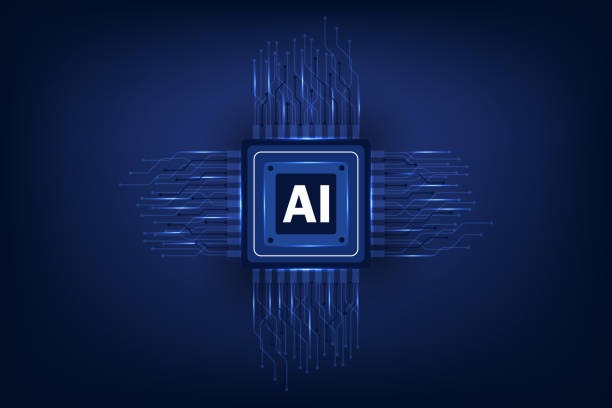What is On-Page SEO and Why is it Important?

On-Page SEO is a set of actions taken within a website to improve the site’s ranking in search results.
These actions include optimizing content, site structure, HTML tags, and page loading speed.
On-page SEO plays a vital role in attracting organic traffic and increasing site visitors.
The importance of on-page SEO is that it helps search engines better understand the site’s content and display it to users who are looking for relevant information.
Without proper on-page SEO, even the best content may not be visible in search results and attract little traffic.
So, to reach the top Google rankings, you should take #onpage_seo seriously.
In short, on-page SEO lets search engines understand what your web page is about.
This process involves optimizing various page elements, such as title, meta description, keywords, images, and main content.
By doing these optimizations correctly, you can increase your chances of ranking higher in search results and attract more traffic to your site.
Success in SEO depends on the proper implementation of SEO techniques.
Also, on-page SEO provides a strong foundation for other SEO strategies, such as off-page SEO and content marketing.
Are you tired of losing business opportunities due to not having a professional company website?
Rasweb helps you build a professional company website to:
✅ Create a powerful and reliable image of your brand
✅ Turn site visitors into loyal customers
⚡ Get a free consultation now!
Keyword Research and Its Role in On-Page SEO

Keyword research is the cornerstone of any SEO strategy, including on-page SEO.
Keywords are phrases that users use to search for information on search engines.
Identifying keywords related to your business and website content helps you optimize your content and attract more targeted traffic.
To start keyword research, you can use various tools such as Google Keyword Planner, Ahrefs, and Semrush.
These tools provide you with information about search volume, competition, and related keywords.
After identifying keywords, you should use them strategically in your content.
This includes using keywords in the page title, meta description, headings, body text, and image alt tags.
However, you should avoid excessive use of keywords (keyword stuffing), as this can lead to your site being penalized by search engines.
On-page SEO means optimizing content for users and search engines, so you need to strike a good balance between using keywords and providing valuable and readable content.
Remember that your ultimate goal is to attract visitors who are interested in your content and are looking to solve their problems.
Optimizing Titles and Meta Descriptions

Titles and meta descriptions are among the most important elements of on-page SEO.
The page title (Title Tag) is the text that appears in the browser title bar and in search results.
The title should be attractive, relevant, and contain the page’s main keyword.
The title length should be less than 60 characters to be fully displayed in search results.
The meta description is a summary of the page’s content that appears below the title in search results.
The meta description should be attractive and persuasive and give users a reason to click on your link.
The meta description length should be between 150 and 160 characters.
Optimizing titles and meta descriptions helps search engines better understand the topic of the page and provide users with accurate information about the page’s content.
This can lead to an increase in click-through rate (CTR) and organic traffic.
On-page SEO also depends on these details.
When writing titles and meta descriptions, you should remember that your goal is to attract visitors, so you should use language that is attractive and relevant to your audience.
Also, you should use relevant keywords in the title and meta description to improve your page’s ranking in search results.
Finally, on-page SEO is an ongoing process, and you should regularly review and update your titles and meta descriptions to make sure they are still effective.
| Page Title | Meta Description |
|---|---|
| Comprehensive On-Page SEO Guide | Complete On-Page SEO tutorial to improve your site’s ranking on Google. Key tips, tools, and effective strategies. |
| Keyword Optimization | How to find the right keywords and use them in your content. Increase organic traffic with keyword strategies. |
Optimizing Content for SEO and Users

Content is the lifeblood of any website.
High-quality, valuable, and relevant content can attract a lot of traffic to your site and turn users into customers.
To optimize content for SEO, you need to pay attention to a few key points.
First, your content should be unique and original.
Avoid copying other people’s content, as this can lead to your site being penalized by search engines.
Second, your content should be well-structured and easy to read.
Use headings, subheadings, paragraphs, and lists to segment the content, and use fonts and colors that improve readability.
Third, your content should be related to your target keywords.
Use keywords naturally and strategically in your content, but avoid excessive use of keywords.
Fourth, your content should be valuable to users.
Answer users’ questions, solve their problems, and provide useful information.
On-page SEO and the production of quality content are two sides of the same coin.
Finally, update your content regularly to make sure it is still relevant and accurate.
By following these tips, you can produce content that is attractive to both search engines and valuable to users.
On-page SEO achieves results with appropriate content.
Is your online store ready to attract maximum customers and increase sales? Rasweb transforms your online business with modern and efficient online store designs.
✅ Increase speed and improve SEO
✅ Excellent user experience on mobile and desktop⚡ Get a free online store design consultation from Rasweb!
The Importance of Internal Linking in On-Page SEO
![]()
Internal linking is the process of creating links between different pages of your website.
Internal linking helps search engines better understand your site’s structure and identify more important pages.
Also, internal linking helps users easily navigate your site and find the information they need.
Internal linking plays an important role in SEO.
To perform effective internal linking, you need to pay attention to a few points.
First, the links should be relevant to the page content.
Avoid linking to irrelevant pages, as this can confuse users and search engines.
Second, use descriptive anchor text.
Anchor text is the text you click on to go to another page.
Use anchor text that briefly describes the topic of the destination page.
Third, link to the more important pages of your site.
The more important pages are the pages you want to rank higher in search results.
By linking to these pages from other pages of the site, you can show search engines that these pages are important.
On-page SEO is more optimized with internal linking.
Optimizing Images for SEO

Images can play an important role in attracting traffic and improving user experience.
However, large and unoptimized images can slow down page loading speeds and negatively impact your site’s SEO.
To optimize images for SEO, you need to pay attention to a few points.
First, use images with the appropriate format.
JPEG and PNG formats are usually the best options for web images.
Second, reduce the image file size.
Use image compression tools to reduce the size of images without losing quality.
Third, use alt tags to describe images.
Alt tags help search engines understand the topic of images and display them in search results.
Use descriptive and keyword-related alt tags.
Fourth, use descriptive file names for images.
Instead of using the camera’s default file names, use file names that briefly describe the topic of the image.
On-page SEO pays special attention to this part as well.
By optimizing images, you can improve page loading speed, increase your site’s ranking in search results, and improve user experience.
Optimizing URLs for SEO

URLs are the addresses of web pages and play an important role in SEO.
Optimized URLs can help search engines better understand the topic of the page and increase your site’s ranking in search results.
To optimize URLs, you need to pay attention to a few points.
First, URLs should be short and descriptive.
Avoid using long and complex URLs.
Second, URLs should contain keywords.
Use keywords related to the topic of the page in the URLs.
Third, use hyphens (-) to separate words in URLs.
Avoid using underscores (_) or other characters.
Fourth, use lowercase letters in URLs.
Some servers are sensitive to upper and lowercase letters in URLs, so it is better to use lowercase letters.
On-page SEO requires careful selection of URLs.
By optimizing URLs, you can help search engines better understand the topic of your pages and increase your site’s ranking in search results.
| Optimized URL | Unoptimized URL |
|---|---|
| example.com/seo-internal | example.com/page?id=123 |
| example.com/best-practices | example.com/article_001 |
Improving Page Loading Speed

Page loading speed is one of the important ranking factors in Google.
Users expect web pages to load in a few seconds.
If your pages load slowly, users may leave your site and go to another site.
To improve page loading speed, you need to pay attention to a few points.
First, optimize your images.
Large and unoptimized images can severely slow down page loading speeds.
Second, use an optimized content management system (CMS).
Some CMSs are more optimized than others.
Third, use fast hosting.
Your hosting plays an important role in page loading speed.
Fourth, use caching.
Caching helps you temporarily store your site’s content and increase page loading speed for future visitors.
On-page SEO can have a better impact by increasing site speed.
By improving page loading speed, you can improve user experience, reduce bounce rate, and increase your site’s ranking in search results.
Does your current website create the trust that potential customers should have in your business? If the answer is no, it’s time to have a professional and impactful company website with Rasweb.
✅ Completely custom design tailored to your brand identity
✅ Increase lead generation and your business’s credibility in the eyes of customers⚡ Contact us for a free consultation!
Responsive Design and Mobile Compatibility

Today, most users access the internet via mobile phones.
Therefore, responsive design and mobile compatibility are very important for SEO.
Responsive design means that your website automatically adapts to the user’s device screen size.
If your website is not responsive, users using mobile phones may encounter problems such as reading text, clicking on links, and viewing images.
Google also prioritizes responsive websites and ranks them higher in search results.
To ensure that your website is responsive, you can use Google’s Mobile-Friendly Test tool.
This tool shows you how your website is displayed on mobile phones and what problems it has.
On-page SEO and designing a website suitable for mobile phones are closely related.
By designing responsively and being compatible with mobile phones, you can improve user experience, increase your site’s traffic, and improve your site’s ranking in search results.
On-page SEO also depends on user experience.
Useful Tools for On-Page SEO

There are many tools that can help you with on-page SEO.
Some of these tools are free, and others are paid.
Here are some useful tools for on-page SEO: Google Search Console is a free tool that provides you with information about your site’s performance in search results.
Using this tool, you can identify the keywords your site is ranking for, site errors, and other SEO problems.
Google Analytics is another free tool that provides you with information about your site’s traffic.
Using this tool, you can track the number of site visitors, popular pages, and other useful information.
Ahrefs is a paid tool that provides you with information about backlinks, keywords, and your competitors.
Semrush is another paid tool that provides you with information about keywords, traffic, and your competitors.
Yoast SEO is a free WordPress plugin that helps you optimize your content for SEO.
On-page SEO requires specialized tools.
By using these tools, you can improve your on-page SEO strategy and increase your site’s ranking in search results.
On-page SEO with accurate and efficient tools yields better results.
Frequently Asked Questions
| Question | Answer |
|---|---|
| What is On-Page SEO? | It refers to the set of actions taken within a website to improve ranking in search engines. |
| Why is On-Page SEO important? | Because it helps search engines better understand the content and structure of your site and improves the user experience. |
| What are the most important elements of On-Page SEO? | Title and Meta Description, Keywords, URL Structure, Quality Content, Image Optimization, Internal Linking, and Site Speed. |
| How to optimize Title Tag and Meta Description? | The title should include the main keyword and be attractive, and the meta description should be a persuasive summary of the content with relevant keywords. |
| What is the role of keywords in On-Page SEO? | Keywords help search engines understand what the page’s content is about and should be used naturally and intelligently in the text. |
| How is image optimization done for On-Page SEO? | By compressing the size, using descriptive file names, and filling the Alt tag with relevant descriptions and keywords. |
| What is Internal Linking and what is its application? | It is the connection of different pages of the site to each other. This helps distribute Page Authority and improve the crawl of search engines. |
| What is the importance of site loading speed in On-Page SEO? | High speed improves user experience and is an important ranking factor for search engines like Google. |
| What is the impact of being Responsive (Mobile-Friendliness) on On-Page SEO? | Given the increasing number of mobile users, being responsive is essential for providing a suitable user experience on all devices and prioritizing Google’s mobile index. |
| What are the important factors related to content in On-Page SEO? | Originality, Quality, Comprehensiveness, Readability, appropriate use of Headings (H1, H2, …), and regular content updates. |
And other services of Rasa Web Advertising Agency in the field of advertising
Intelligent Advertising Campaign: A new service to increase digital branding by optimizing key pages.
Smart Custom Software: A fast and efficient solution to increase click-through rate by focusing on the use of real data.
Smart Reportage: A dedicated service for online growth based on attractive user interface design.
Smart Linking: A dedicated service to increase click-through rate based on user experience customization.
Smart Social Media: An effective tool to increase sales by using real data.
And more than hundreds of other services in the field of internet advertising, advertising consulting, and organizational solutions
Internet Advertising | Advertising Strategy | Advertising Reportage
Resources
On-Page SEO Optimization: Moz Complete Guide
,On-Page SEO: Ahrefs Complete Guide
,On-Page SEO Guide from Semrush
,What is On-Page SEO? Search Engine Land Guide
? For the prosperity of your business and being seen in the digital world, Rasa Web Aferin is your reliable partner. From website design with a modern user interface to comprehensive digital marketing strategies, we are by your side.
For consultation and information about our services, contact Rasa Web Aferin experts.
📍 Tehran, Mirdamad Street, next to the Central Bank, South Kazerun Alley, Ramin Alley No. 6




